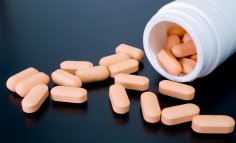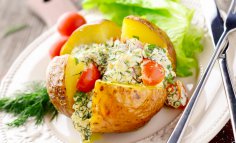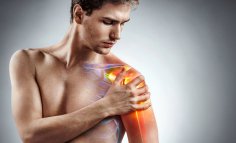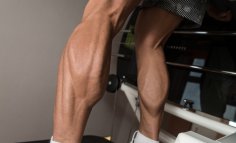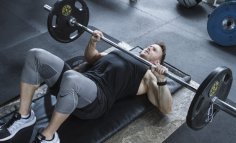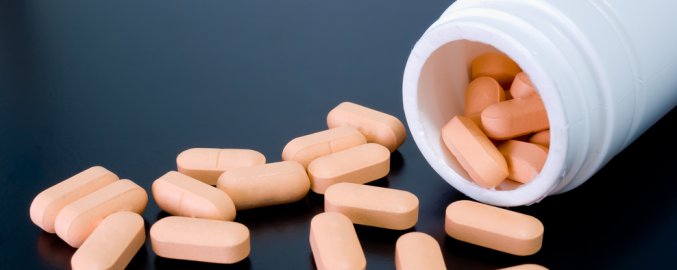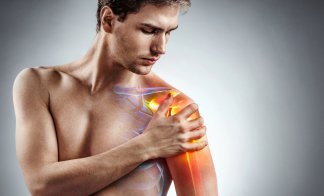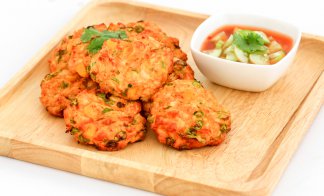Det er sesong for "deffing" og diett for mange. De fleste tåler vel tilskudd for "vekttap" som er basert på urter og andre "naturlige" ingredienser godt. Men det er selvsagt også god grunn til å være obs på hva en putter i seg og hvordan kroppen reagerer på slike midler!
Syntes det følgende var en ganske oppsiktsvekkende publikasjon. Om dette er et problem for noen stor del av brukere av kost tilskudd skal jeg ikke ha sagt noe om, men her er den...Takker for alle som evt kan vise til studier som taler mot det under!
Am J Med Sci. 2004 Jun;327(6):356-7.
Rhabdomyolysis in response to weight-loss herbal medicine.Mansi IA, Huang J.
Louisiana State University Health Sciences Center, Department of Medicine, School of Medicine in Shreveport, Shreveport, Louisiana 71130, USA.
IMansi@lsuhsc.eduMany herbal medicines are marketed as weight-loss remedies. In this case, we report rhabdomyolysis after the ingestion of weight-loss herbal medicine in an otherwise healthy woman. A 54-year-old white woman presented with severe left- and right-sided chest pain 3 hours after ingestion of a “bodymaximizing” herbal medicine for weight loss. The pain was severe, spasmodic in nature, and associated with mild shortness of breath. Pain continued for 2 hours and resolved gradually. The patient denied any strenuous muscle activity or use of alcohol or street drugs. The patient had no significant past medical history except for moderate obesity. She did not use any medications except for hormone replacement therapy. Physical examination findings were unremarkable, except for mild tenderness on the left pectoral area. Blood pressure was 124/74 mm Hg, pulse 90/min, and temperature 36.9°C. Laboratory investigation showed normal total and differential white blood cell count, hemoglobin, platelet count, blood urea nitrogen level, serum creatinine level, liver enzyme level, thyroid-stimulating hormone level, and electrolyte level. A urine drug screen was negative for illicit drugs, as was the serum level for alcohol, salicylates, and acetaminophen. The patient's serum creatine kinase (CK) was 1028 IU/L (reference range, 26–140), CK-MB was 3.07 ng/mL, troponin I was less than 0. 4 ng/L, and myoglobin was 171.4 ng/mL (reference range, 0.0-116.0). Serial repeat assessment of CK (every 6 hours) found levels of 1076, 902, and 714 IU/L; myoglobin decreased to 96.2 ng/mL, and troponin-I remained at less than 0.4 ng/L. Electrocardiography did not show ischemic changes. Results of an exercise thallium test were normal. AntiJo-1 and antiMi-2 were negative. Electromyogram and nerve conduction studies, 2 weeks after discharge, were normal. Follow-up serum CK, blood urea nitrogen, and creatinine levels after 3 weeks were normal.The ingredients of the “body maximizing” herbal medicine, as listed on the bottle label, were as follows: vitamin E 6 IU, magnesium 75 mg, zinc 5 mg, chromium 200 mg, ma huang 150 mg (12 mg ephedrine), guarana 190 mg, chitosan 250 mg, Gymnena sylvestre 100 mg, and Garcinia cambogia 50 mg (50% hydroxycitric acid). The proprietary blend also contained bee pollen, ginseng root, ginger root, lecithin, damiana herb, sarsaparilla root, nettle leaf, and royal jelly.
Discussion
Many of the ingredients of the herbal medicine can be implicated in rhabdomyolysis. Serious side effects to ma huang, owing to its
ephedrine contents, have been reported, such as stroke, myocardial infarction, and sudden death.3,4 Ephedrine and pseudoephedrine were reported to cause rhabdomyolysis.5 Guarana contains active alkaloid caffeine, theophylline, and theobromin 6 and is used to enhance the effects of ma huang. Caffeine increases the release of catecholamines.6 Caffeine also increases skeletal muscle contractility and decreases muscle fatigue. Caffeine may result in anxiety, restlessness, tremors, and diuresis.6 At least two cases of rhabdomyolysis after ingestion of caffeine have been reported.8,9 The active ingredient of G cambogia is hydroxycitric acid. The action of hydroxycitric acid on muscle cells is not thoroughly evaluated in the scientific literature. It was suggested that hydroxycitric acid may inhibit the formation of fatty acids and shunt the energy toward heat production, both of which may theoretically cause muscle breakdown.10 Ohia et al 11 found that G cambogia increases the release of serotonin in rat brain cortex. Although wide variations exist among different ginseng products, some ginseng products were reported to cause hypertension, insomnia, vomiting, and central nervous system stimulation, which could potentiate the above-mentioned effects.12 Chromium has also been implicated in a case of rhabdomyolysis.13 Scroggie et al 10 reported two cases of rhabdomyolysis in young athletes associated with nutritional supplements marketed as “strength training enhancer,” which also contained ma huang, guarana, G cambogia, and chromium but in different proportions than the herbal medicine in this case report.
The elevation of CK in this case is of concern, as it may denote that muscle breakdown is one of the mechanisms of weight loss in these herbal remedies.
This effect might have been exaggerated, and consequently symptomatic, in this patient but may be subclinical in other individuals. Some studies that comparedma huang/caffeine remedies to placebo showed that total body weight and body fat composition decreased in the herbal remedy group,14 but no studies, to our knowledge, measured the muscle bulk or CK levels. Further studies are needed to investigate their effects on muscle bulk rather than on total body weight Because herbal weight-loss products were marketed as dietary supplements and not subjected to stringent regulations as drugs, the presence of contaminants that could have resulted in rhabdomyolysis cannot be ruled out.Physicians should be aware of the potential side effects of many herbal medicines, and ask patients about their use. We suggest that until further data are available, physicians should intermittently measure serum CK enzyme levels in patients who report using weight-loss herbs.
References
1. Curry SC, Chang D, Connor D. Drug- and toxin-induced rhabdomyolysis. Ann Emerg Med 1989;18:1068–84.
2. Prendergast BD, George CF. Drug-induced rhabdomyolysis: mechanisms and management. Postgrad Med J 1993;69:333–6.
3. Samenuk D, Link M, Homoud M, et al. Adverse cardiovascular events temporally associated with ma huang, an herbal source of ephedrine. Mayo Clinic Proc 2002;77:12–6.
4. Haller C, Benowitz N. Adverse cardiovascular and central nervous system events associated with dietary supplements containing ephedra alkaloids. N Engl J Med 2000;343:1833–8.
5. United States Food and Drug Administration. Center for food safety and applied nutrition. Office of special nutritionals adverse events monitoring system.
http://vm.cfsan.fda.gov/~dms/ds-warn.html . Accessed November 18, 2003.
6. PDR for herbal medicine. New York: Medical Economics Company, 1999. 7. Rall T. Drugs used in the treatment of asthma: the methylxanthines, cromolyn
sodium and other agents. In: Goodman A, Rall T, Niles A, et al, editors. Goodman and Gillman's the pharmacological basis of therapeutics. 8th ed. New York:
Pergamon Press; 1990. p. 618–37.
8. Kamijo Y. Severe rhabdomyolysis following massive ingestion of oolong tea: caffeine intoxication with coexisting hyponatremia. Vet Hum Toxicol 1999;41:381–3.
9. Wrenn K. Rhabdomyolysis induced by a caffeine overdose. Ann Emerg Med 1989;18:94–7.
10. Scroggie DA, Harris M, Sakai L. Rhabdomyolysis associated with nutritional supplement use. J Clin Rheumatol 2000;6:328–32.
11. Ohia S, Opere C, LeDay A, et al. Safety and mechanism of appetite suppression by a novel hydroxycitric acid extract. Mol Cell Biochem 2002;238:89–103.
12. Miller L. Herbal medicinals, selected clinical consideration focusing on known or potential drug-herb interactions. Arch Intern Med 1998;158:2200–11.
13. Martin W, Fuller R. Suspected chromium picolinate-induced rhabdomyolysis. Pharmacotherapy 1998;18:860–2.
14. Boozer C, Nasser J, Heymsfield S, et al. An herbal supplement containing ma huang-guarana for weight loss: a randomized, double-blind trial. Int J Obes
Relat Metab Disord 2001;25:316–24.

